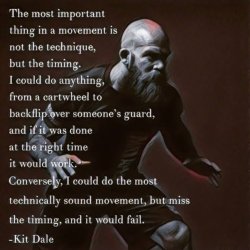Tai Chi and Qigong, as well as all Chinese martial arts, begin training by copying and repeating techniques. Over time, these techniques become internalized and yield what is known as “gong” — the same word as “gong fu” (kung fu). This kung fu is the ability to express the principles of the art physically with your body.

The biggest mistake beginners make is to focus on the art intellectually and to try and understand or rationalize the principles of the art before being able to express them. It is good to understand what the principles are as a roadmap but no amount of “understanding” makes up for “perception”. It can also cause problems if there is a mistake in understanding because the student will miss or resist the correct training results later.
“If you want what I have, then do what I do.”
This teaching is easy to understand and easy to follow. The teacher says, “If you want what I have, then do what I do.” You must copy the teacher’s techniques diligently, precisely and accurately, trust the teacher and be patient to achieve results. This is difficult to understand in the beginning because it can take years to achieve results. So you must find a teacher who is both knowledgeable and virtuous in his conduct and you must follow him for as long as you can.

What do you think? What is more important? To understand the principles, or to perform the techniques? Are they really two separate things?

The biggest mistake beginners make is to focus on the art intellectually and to try and understand or rationalize the principles of the art before being able to express them. It is good to understand what the principles are as a roadmap but no amount of “understanding” makes up for “perception”. It can also cause problems if there is a mistake in understanding because the student will miss or resist the correct training results later.
“If you want what I have, then do what I do.”
This teaching is easy to understand and easy to follow. The teacher says, “If you want what I have, then do what I do.” You must copy the teacher’s techniques diligently, precisely and accurately, trust the teacher and be patient to achieve results. This is difficult to understand in the beginning because it can take years to achieve results. So you must find a teacher who is both knowledgeable and virtuous in his conduct and you must follow him for as long as you can.

What do you think? What is more important? To understand the principles, or to perform the techniques? Are they really two separate things?

